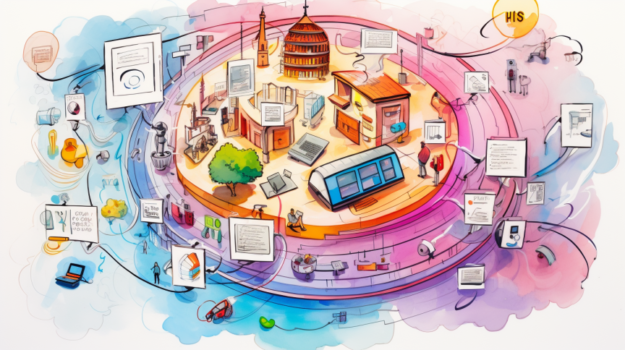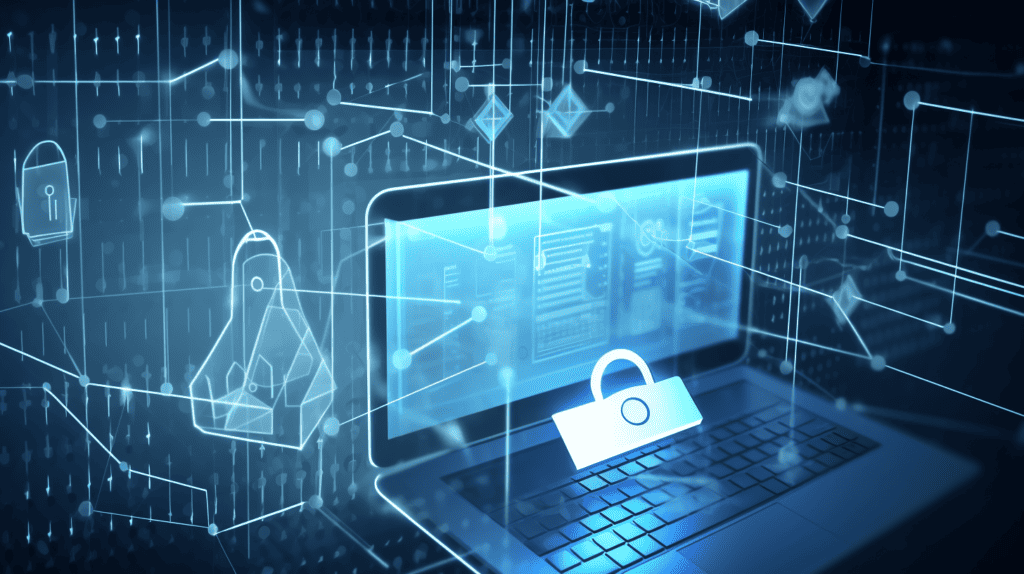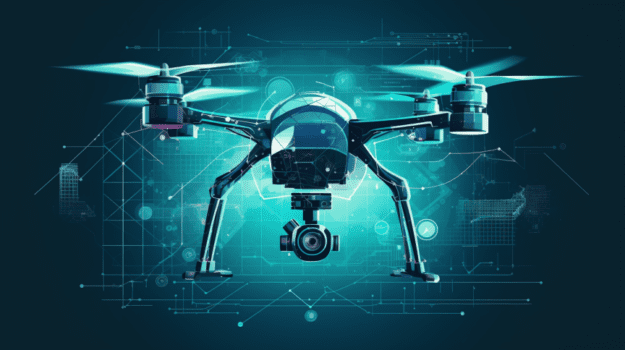Introduction

As we continue to navigate the digital age, the importance of information security has become increasingly evident. With the ever-evolving threat landscape posing challenges for organizations, the need for emerging technologies in combating cyber threats has become crucial. In this article, we will delve into the various ways in which emerging technologies are shaping the game of information security.
Understanding the Current State of Information Security

The history and evolution of information security
Information security has come a long way since its inception. From the early days of simple encryption methods to the complex systems we see today, the field has consistently evolved to protect against increasingly sophisticated attacks.
Key challenges faced by organizations today
- Increasing complexity of cyber threats With the advancement of technology, cyber threats have become more intricate and diverse. Hackers continuously find new ways to exploit vulnerabilities, putting organizations at greater risk.
- Growing sophistication of hackers Criminals with malicious intent have honed their skills, making it harder for organizations to defend against attacks. This includes techniques such as advanced persistent threats (APTs) and zero-day exploits.
- Widening attack surface with the rise of IoT and cloud computing The proliferation of IoT devices and the adoption of cloud computing have expanded the attack surface for hackers. These technologies present unique security challenges that need to be addressed effectively.
The Role of Artificial Intelligence in Information Security

Harnessing machine learning for threat detection and prevention
- Application of AI in analyzing vast amounts of data AI algorithms can process and analyze large volumes of data to identify patterns and anomalies that might indicate potential cyber threats. This helps in detecting and mitigating attacks more effectively.
- Improving accuracy and speed of threat identification Machine learning algorithms can learn from historical data and continuously improve their ability to identify threats accurately. This enables organizations to respond swiftly and prevent potential breaches.
- AI-powered anomaly detection By using AI to monitor networks and systems, organizations can detect and respond to anomalous behavior in real-time. This proactive approach allows for the identification of potential threats before they can cause significant damage.
Chatbots and virtual assistants for enhanced security awareness
- Utilizing conversational AI to provide real-time security guidance Chatbots and virtual assistants can be integrated into security systems to provide instant, context-specific guidance to users. This assists in promoting security awareness and helps users make informed decisions.
- Educating and empowering users in recognizing and responding to potential threats Through interactive conversations, chatbots and virtual assistants can educate users about common cyber threats, phishing scams, and best practices to mitigate risks. This empowers users to be more proactive in protecting themselves and the organization.
AI-driven automation for proactive defense measures
- Automating security incident response and remediation AI-driven automation enables organizations to respond rapidly to security incidents by automatically analyzing and mitigating threats. This reduces response times and minimizes the potential impact of an attack.
- Deploying AI in vulnerability assessment and patch management By utilizing AI algorithms, organizations can identify vulnerabilities in their systems and prioritize them for patching, reducing the risk of exploitation by attackers. This proactive approach ensures a more secure environment.
- Predictive analytics in anticipating future security risks With the help of AI-powered predictive analytics, organizations can anticipate future security risks and develop preemptive measures to counteract them. This data-driven approach enhances overall security posture.
Blockchain Technology in Information Security

Overview of blockchain and its potential impact on security
Blockchain is a distributed ledger technology that offers a potential solution for enhancing security. Its decentralized and transparent nature provides opportunities to address various security concerns effectively.
Securing transactions and data integrity with blockchain
- Immutable and transparent data records Blockchain’s inherent immutability ensures that once data is recorded, it cannot be altered or tampered with. This feature provides an added layer of trust and integrity to transactions and data storage.
- Eliminating the need for intermediaries in secure transactions With blockchain, transactions can be conducted directly between parties without the need for intermediaries. This reduces the risk of data breaches and increases the efficiency of secure transactions.
Decentralized identity management using blockchain
- Enhanced privacy and control over personal data Blockchain-based identity management systems empower individuals with control over their personal data. It eliminates the risk of centralized data repositories being compromised, resulting in reduced identity theft and fraud risks.
- Reducing identity theft and fraud risks By leveraging blockchain’s transparency and immutability, organizations can establish secure digital identities that are resistant to tampering. This helps in mitigating identity theft and fraud risks.
Enforcing smart contracts for secure agreements
- Automating and ensuring trust in digital contracts Smart contracts, powered by blockchain, enable automated execution and enforcement of agreements. The self-executing nature of smart contracts eliminates the need for intermediaries, reducing the risk of contract manipulation.
- Mitigating risks of contract manipulation and dispute resolution Blockchain-based smart contracts provide a tamper-proof and transparent layer for agreements. This ensures that contracts cannot be altered fraudulently, minimizing the risks associated with contract disputes.
The Importance of Quantum Computing in Securing the Future

Understanding the power of quantum computing
Quantum computing has the potential to revolutionize various fields, including information security. Its immense computational power poses both challenges and opportunities in securing the future.
Quantum cryptography and unbreakable encryption
- Harnessing quantum properties for robust encryption algorithms Quantum cryptography utilizes the principles of quantum mechanics to create encryption algorithms that are incredibly secure. The unique properties of quantum particles offer unbreakable encryption for sensitive data.
- Ensuring secure communication channels Quantum communication protocols, such as quantum key distribution, provide secure channels for transmitting cryptographic keys. These channels are resistant to interception and eavesdropping, making them ideal for secure communication.
Quantum-resistant algorithms and post-quantum cryptography
- Preparing for the future threat of quantum computers As quantum computers continue to advance, traditional encryption algorithms may become vulnerable. It is essential to develop and adopt quantum-resistant algorithms that can withstand attacks from quantum computers.
- Developing encryption methods resilient to quantum attacks Post-quantum cryptography focuses on developing encryption algorithms that are resistant to attacks from quantum computers. These algorithms aim to ensure the long-term security of sensitive data.
The Emergence of Biometrics in Authentication Systems

Biometric authentication as a critical element of information security
Biometric authentication offers a secure and convenient way to authenticate users. By relying on unique physical or behavioral characteristics, biometrics enhance the accuracy and reliability of authentication systems.
Advancements in biometric technologies
- Facial recognition and identity verification Facial recognition technology uses unique facial features to identify individuals accurately. It has applications in various sectors, including law enforcement, access control, and identity verification.
- Iris and retina scanning for secure access control Iris and retina scanning provide highly accurate biometric identification. These technologies can be deployed in high-security areas where access control needs to be stringent.
Voice recognition and behavioral biometrics
- Unique vocal characteristics for secure user identification Voice recognition technology analyzes unique vocal characteristics, such as pitch, tone, and cadence, to verify the user’s identity. This method offers an additional layer of security in authentication systems.
- Analyzing behavioral patterns for fraud detection Behavioral biometrics analyze patterns in user behavior, such as typing speed and mouse movements, to detect anomalies that might indicate fraudulent activity. This helps in preventing potential security breaches.
Protecting the Internet of Things (IoT) with Robust Security Measures

Understanding the vulnerabilities of IoT devices
The interconnected nature of IoT devices introduces various security vulnerabilities that can be exploited by attackers. Protecting IoT devices and the networks they connect to is essential for maintaining overall information security.
Implementing strong authentication and access controls
- Secure device provisioning and authentication protocols By implementing secure device provisioning and authentication protocols, organizations can ensure that only authorized devices have access to IoT networks. This reduces the risk of unauthorized access and data breaches.
- Role-based access management and authorization Implementing role-based access management ensures that users and devices only have access to the resources they require. Granular control over access privileges minimizes the attack surface for potential breaches.
Ensuring data confidentiality and privacy in IoT
- Encryption and secure communication protocols Encrypting IoT data and utilizing secure communication protocols protect against data interception and tampering. This ensures data confidentiality and maintains the privacy of sensitive information.
- Data anonymization techniques to protect user identity Anonymizing IoT data by removing personally identifiable information helps protect user privacy. By dissociating data from specific individuals, the risk of identity theft and unauthorized profiling is reduced.
Continuous monitoring and vulnerability management for IoT devices
- Real-time threat intelligence and anomaly detection Continuous monitoring of IoT devices enables early detection of potential threats. With real-time threat intelligence and anomaly detection, organizations can respond swiftly to emerging security risks.
- Regular patching and firmware updates Ensuring IoT devices have the latest security patches and firmware updates is crucial to mitigate vulnerabilities. Regular updates help protect against known exploits and enhance overall device security.
The Role of Big Data Analytics in Cybersecurity

Leveraging big data for proactive threat intelligence
Big data analytics enables organizations to analyze vast amounts of data to identify patterns and predict potential threats. By understanding the data landscape, organizations can take preemptive action against emerging risks.
Analyzing user behavior for anomaly detection
- Identifying abnormal patterns and potential insider threats By analyzing user behavior, organizations can detect abnormal patterns that might indicate insider threats. This allows for the identification and prevention of potential security breaches.
- Real-time monitoring and dynamic risk scoring Real-time monitoring of user behavior combined with dynamic risk scoring enables organizations to assess the threat level accurately. This proactive approach ensures timely response to potential security incidents.
Predictive analytics for identifying future cyber threats
- Anticipating potential vulnerabilities and developing preemptive measures With predictive analytics, organizations can identify potential vulnerabilities and develop preemptive measures to mitigate the risk of future cyber threats. This data-driven approach enhances proactive security measures.
- Utilizing machine learning algorithms for threat prediction Machine learning algorithms can analyze historical threat data to identify patterns and predict future cyber threats. This enables organizations to stay ahead of emerging threats and implement preemptive security measures.
Cloud Security and the Evolving Landscape

The benefits and challenges of cloud computing
Cloud computing offers numerous benefits, such as scalability and cost-efficiency. However, it also introduces new challenges in terms of securing data and maintaining control in a shared environment.
Strengthening cloud security with emerging technologies
- Encryption and key management in the cloud environment Encrypting data and managing encryption keys are essential for securing sensitive information in the cloud. Robust encryption and effective key management practices ensure data confidentiality.
- Cloud access security brokers (CASBs) for enhanced visibility and control CASBs provide organizations with increased visibility into their cloud environment. By monitoring and enforcing security policies, CASBs enhance control over cloud applications and data access.
Cloud-native security solutions for proactive defense
- Container security and microsegmentation Implementing container security measures and microsegmentation in the cloud environment enhances the isolation and protection of applications and data. This ensures that attacks do not spread across the cloud infrastructure.
- DevSecOps to integrate security into the development process DevSecOps aims to integrate security practices into the development process, ensuring that security is not an afterthought. Embedding security controls throughout the Cloud Development Lifecycle (CDLC) strengthens cloud security posture.
Summary and Conclusions

In conclusion, emerging technologies are revolutionizing the field of information security. From the role of artificial intelligence in threat detection to the potential of quantum computing in secure encryption, these advancements offer immense potential for enhancing information security.
It is imperative for organizations to proactively adopt these technologies and continuously innovate in order to stay ahead of the ever-changing threat landscape. By embracing these advancements, we can pave the way towards a safer and more secure digital future.
FAQs and their answers:

Q: What are the core challenges in information security today?
A: The core challenges in information security today include increasing complexity of cyber threats, growing sophistication of hackers, and the expanding attack surface with the rise of IoT and cloud computing. Organizations struggle to keep up with evolving threats, protect sensitive data, and ensure robust security measures across their systems.
Q: How can artificial intelligence improve threat detection?
A: Artificial intelligence (AI) can greatly enhance threat detection by harnessing machine learning algorithms to analyze vast amounts of data. AI can identify patterns, anomalies, and indicators of compromise, enabling faster and more accurate detection of potential threats. It can also automate incident response, remediation, and vulnerability management processes, enhancing overall cybersecurity effectiveness.
Q: What are the benefits of blockchain technology in securing data?
A: Blockchain technology offers several benefits for securing data. It provides immutable and transparent data records, ensuring that information cannot be altered or tampered with unnoticed. Blockchain eliminates the need for intermediaries in secure transactions, reducing the risk of unauthorized access or data manipulation. Additionally, decentralized identity management using blockchain enhances privacy, reduces identity theft risks, and gives individuals greater control over their personal data.
Q: Is quantum computing a threat to current encryption methods?
A: Quantum computing has the potential to pose a threat to current encryption methods. Quantum computers can theoretically break many of the existing cryptographic algorithms that rely on prime factorization or discrete logarithm problems. To counter this, researchers are developing quantum-resistant algorithms and post-quantum cryptography, which aim to provide secure encryption methods that can withstand attacks from quantum computers.
Q: How can biometrics enhance authentication systems?
A: Biometrics can enhance authentication systems by leveraging unique physical or behavioral characteristics of individuals. Technologies such as fingerprint recognition, facial recognition, iris scanning, and voice recognition provide a high level of security. Biometric authentication reduces reliance on passwords, which can be vulnerable to theft or brute-force attacks. It offers convenient and secure user identification, helping to prevent unauthorized access to systems or sensitive data.
Q: What security measures should be considered for IoT devices?
A: Security measures for IoT devices should include strong authentication and access controls, secure device provisioning, and regular patching and firmware updates. Implementing encryption and secure communication protocols is crucial for protecting data confidentiality. Role-based access management and authorization ensure that only authorized individuals can interact with IoT devices. Continuous monitoring, vulnerability management, and adherence to industry best practices are essential to address the unique security challenges posed by IoT devices.
Q: How does big data analytics contribute to cybersecurity?
A: Big data analytics plays a significant role in cybersecurity by providing proactive threat intelligence and real-time monitoring. By analyzing large volumes of data, organizations can identify abnormal patterns, potential insider threats, and emerging attack trends. Big data analytics enables dynamic risk scoring, helping to prioritize security measures. It also contributes to predictive analytics, empowering organizations to anticipate vulnerabilities and develop preemptive measures against future cyber threats.
Q: What are the key factors to consider for secure cloud computing?
A: Secure cloud computing requires attention to several key factors. Encryption and key management should be implemented to protect data stored in the cloud. Cloud access security brokers (CASBs) provide enhanced visibility and control over cloud services. Additionally, organizations should consider container security, microsegmentation, and DevSecOps practices to integrate security into the development and deployment of cloud-based applications. Data privacy regulations, compliance requirements, and regular security assessments are crucial for maintaining a secure cloud environment.
Q: Are there any emerging threats or security considerations for 5G networks?
A: Yes, with the advent of 5G networks, new security considerations arise. Some potential emerging threats include increased attack surface due to a larger number of connected devices, vulnerabilities in the network slicing architecture, and potential exploitation of network function virtualization (NFV) infrastructure. Organizations need to implement robust security measures such as strong authentication, encryption, intrusion detection and prevention systems, and regular security audits to mitigate these risks.
Q: How can organizations protect against social engineering attacks?
A: Protecting against social engineering attacks involves a combination of employee education, awareness programs, and robust security practices. Organizations should train employees to recognize common social engineering techniques such as phishing, pretexting, and baiting. Implementing multi-factor authentication, regular security awareness training, and secure communication protocols can significantly reduce the risk of falling victim to social engineering attacks. Regular security assessments and monitoring can also help identify and address vulnerabilities.
Q: What are the main security considerations for remote work environments?
A: Remote work environments require specific security considerations. Organizations should enforce strong password policies, implement multi-factor authentication, and use secure virtual private networks (VPNs) to protect remote connections. Endpoint security measures, such as antivirus software, firewalls, and regular patch management, are essential. Employee education on safe remote work practices and data protection is crucial, along with secure file sharing and collaboration tools. Regular security audits and monitoring can help ensure ongoing protection in remote work settings.
Remember, staying informed about the latest threats and best security practices, as well as continuously adapting security measures, is essential in today’s rapidly evolving threat landscape.






